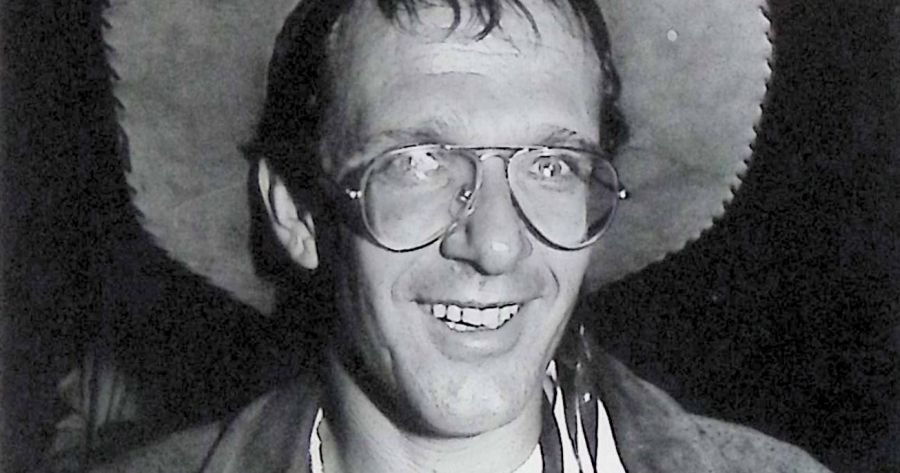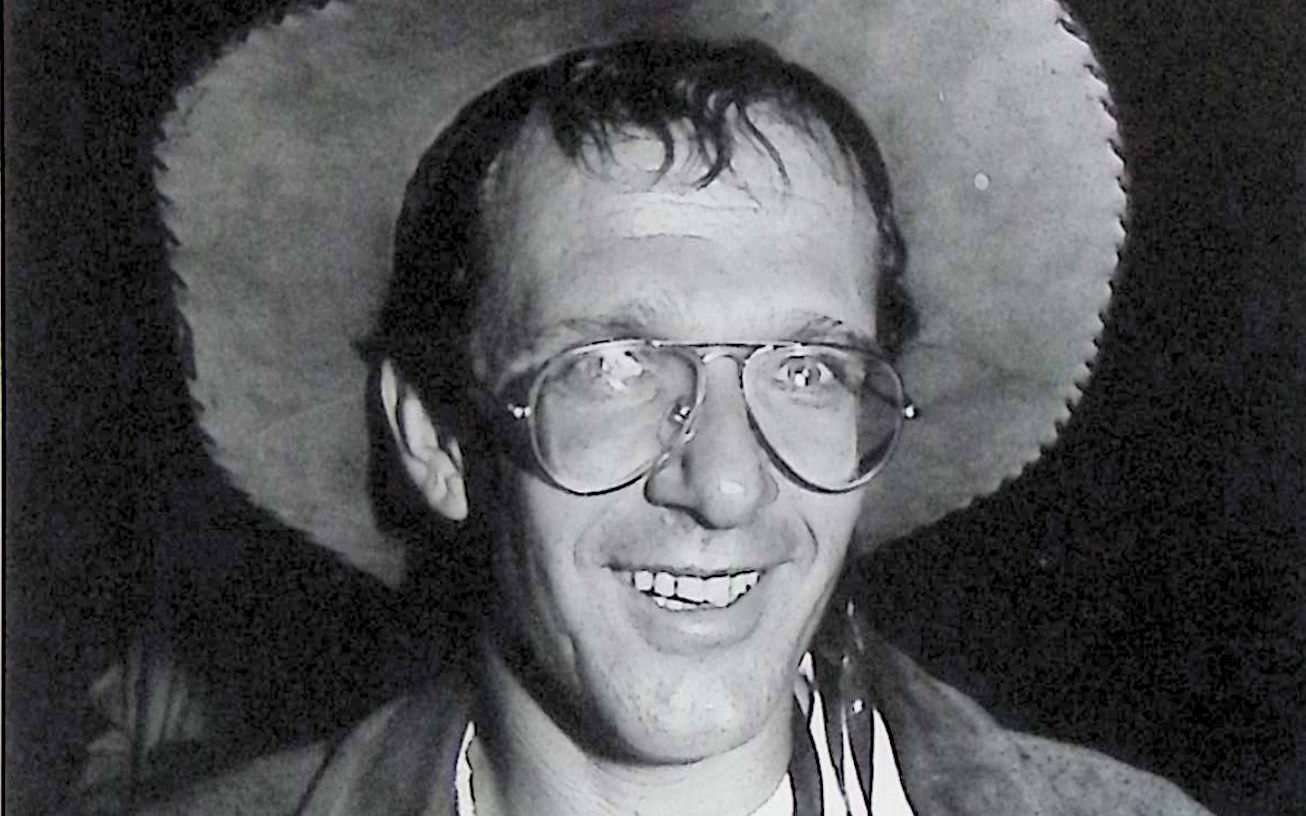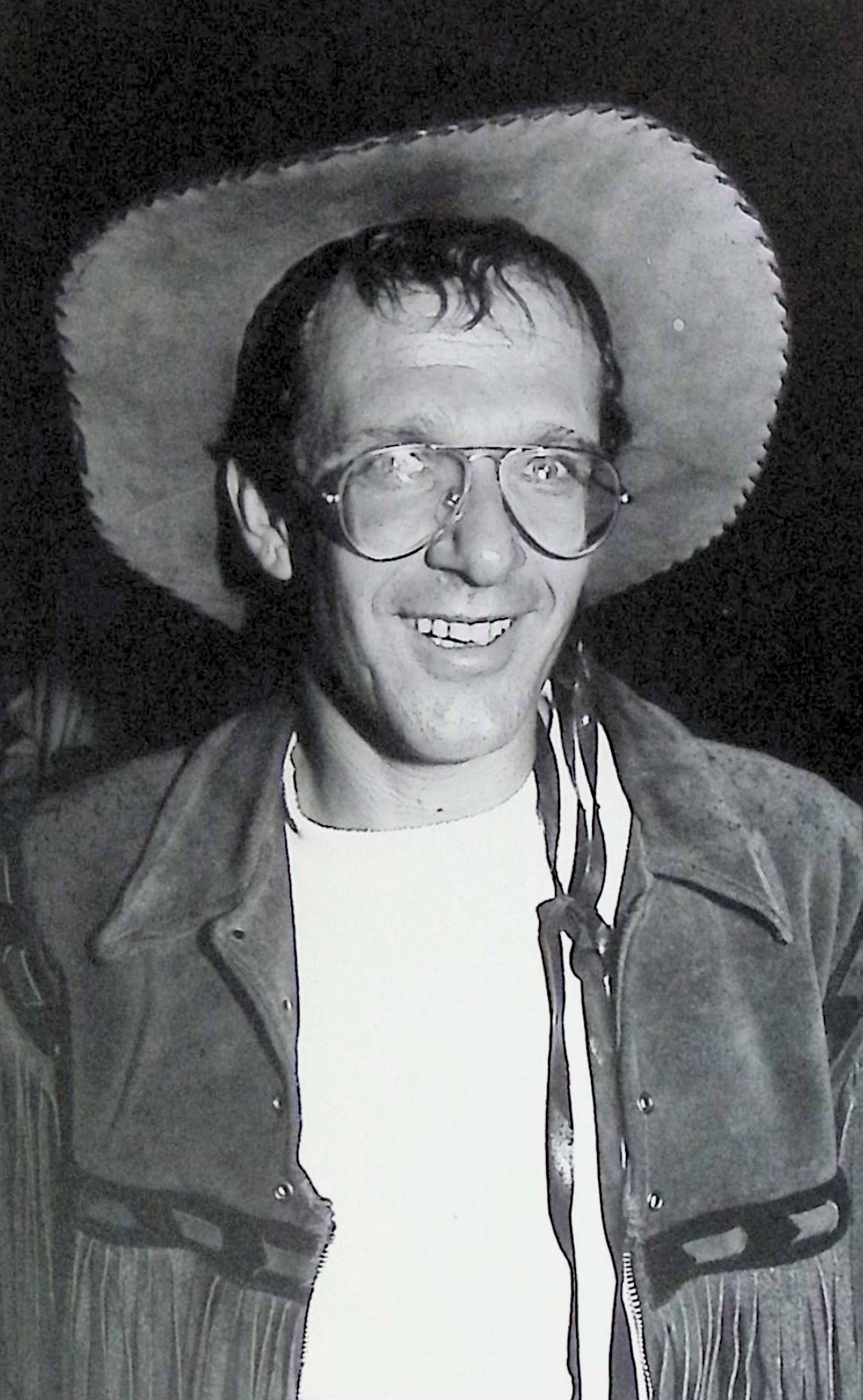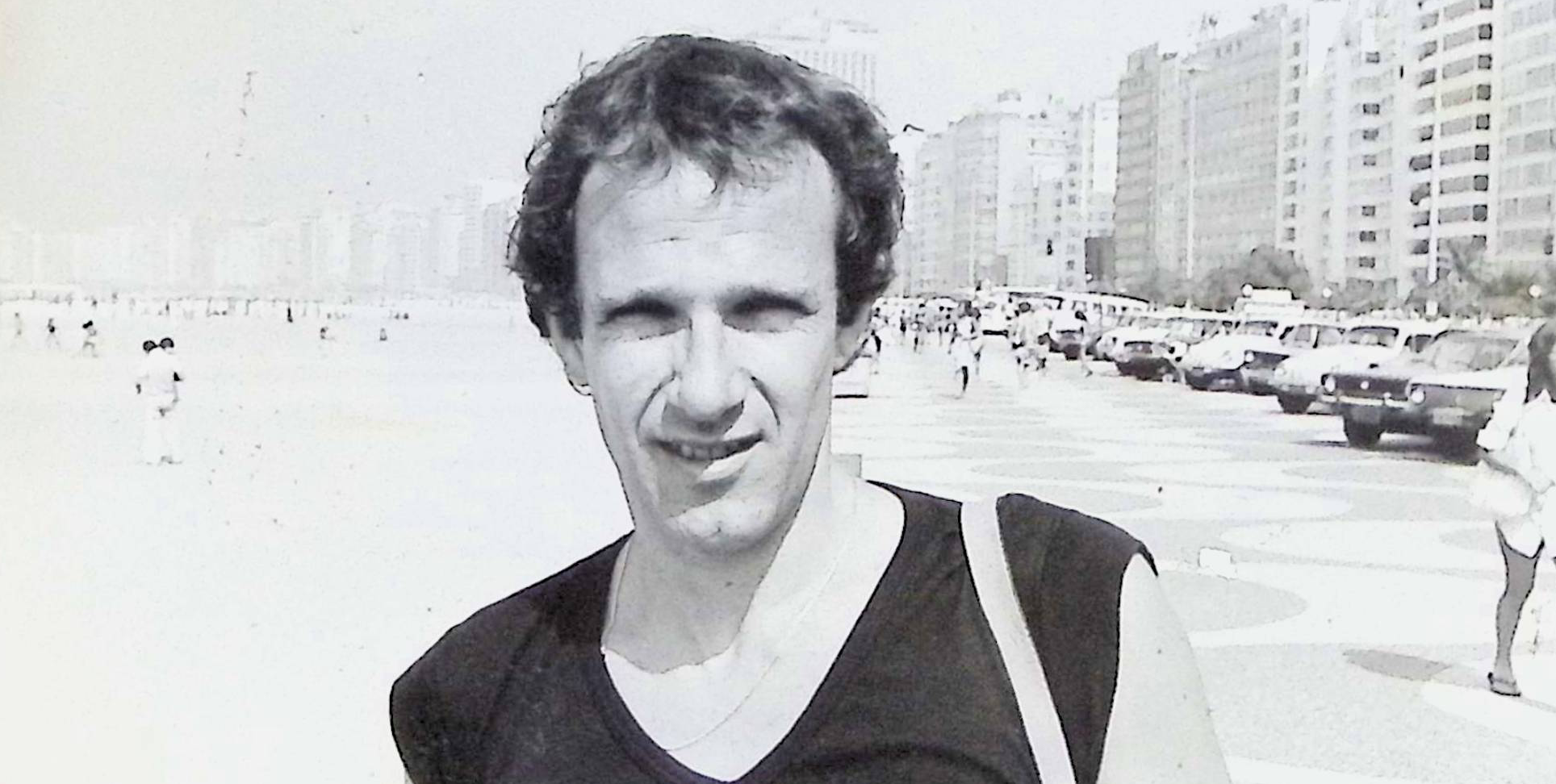
- Free Article: No
- Contents Category: Commentary
- Custom Article Title: The spectre of tribalism: Reflections on Israel, AIDS and identity politics
- Review Article: No
- Article Title: The spectre of tribalism
- Article Subtitle: Reflections on Israel, AIDS and identity politics
- Online Only: No
- Custom Highlight Text:
Last year I turned eighty. Vacillating between denial and celebration, I decided, with some trepidation, on the latter. It was thirty years since I had last had a big birthday party: this one needed to be special. I consoled myself that, old as I am, I am still younger than the president of the United States, Mick Jagger, and the pope.
- Featured Image (400px * 250px):

- Alt Tag (Featured Image): ‘The spectre of tribalism: Reflections on Israel, AIDs and identity politics’ by Dennis Altman
However we parse it, eighty is old. Yes, Verdi wrote his last opera at that age, and Margaret Atwood and Helen Garner continue to write in their eighties. It would be dishonest to deny that the spectre of death lurks, that one becomes increasingly aware that every experience might be the last. Nothing shocked me more in thinking about my age than realising that someone aged eighty in the year I was born was alive before the end of the US Civil War and the first telephones.
Ageing also brings with it a sense of increasing irrelevance, despite the obligatory calls to honour our elders. As our health demands more and more attention by specialists, they in turn seem younger each year. The world moves on, leaving us increasingly nostalgic for what no longer exists in a world seemingly ruled by smart phones and social media. Postcards carrying exotic stamps no longer arrive from friends overseas; street directories and phone books become a distant memory. My childhood in Hobart was punctuated by the arrival of the evening Melbourne Herald; now I am one of the dwindling number of people who read a print newspaper over breakfast.
Yet if each generation slays its fathers, it tends to honour its grandparents. In that twilight period when our memories become a new generation’s history, I am increasingly asked to talk about the emergence of gay liberation half a century ago. During a small event at a queer bookstore in New York, I upset my interlocuter, a charming guy in his twenties, when I said I doubted that Stonewall had meant much outside the United States.
At least in the cities, the Australia I grew up in has retreated to old film clips and documentaries. The Saturday before Christmas I took the train to the far west of Sydney to be with Anthony’s family, sharing a carriage with a cheerful group of young women who had just come from a Palestinian rally, some in head scarves and sharing packets of supermarket chips. The shopfronts as we passed through Lidcombe, Granville, and Harris Park were a mix of languages and alphabets, Vietnamese and Ethiopian restaurants set amidst furniture warehouses and old Irish pub fronts. I love what Australia has become; I mourn the fact that, despite our much-vaunted multiculturalism, a small and respectful step towards Indigenous reconciliation was defeated in a popular vote.
Earlier this year, I was in Hobart to speak at an event in support of queer asylum seekers. I left Hobart on my twenty-first birthday to go to graduate school in the United States, and since then have only visited for short periods. No Australian city is as shaped by its geography, nestled as it is between river and mountain, but Hobart, too, has changed, has become less white, more cosmopolitan, wealthier. The museum where schoolchildren were taken to see the preserved remains of Truganini, ‘the last Tasmanian’ – the descendants of Indigenous Tasmanians were effectively whitewashed out of existence for almost a century – now pays due respect to the much more complex history of dispossession and survival.
Hobart today is full of chic coffee bars and Asian restaurants; when I grew up there were two Chinese restaurants in the entire city, and a friend of my mother’s served traditional afternoon teas in a small café in the narrow Criterion Lane. Several passers-by look familiar, but perhaps I see traces of their grandparents in the faces of passing adolescents. Bodies, too, have changed: the young are taller, and there is growing obesity alongside gym-toned buffness.
Particularly for women, there are far greater options than for those of my generation. When I was at school, most girls who went on to further study would become either teachers or nurses, and the assumption was that their careers would end with marriage. There were no women bank tellers, newsreaders or airline pilots, though we boasted the first woman federal minister, Tasmania’s Enid Lyons. She, however, only entered politics after the death of her husband, Prime Minister Joseph Lyons.
Much of my life has been shaped by the stroke of luck that took me to New York at the birth of the American gay liberation movement. I had already been a lecturer at Monash University in the late 1960s, where an extraordinary group of honours students introduced me to the ideas of Herbert Marcuse. In 1969, I moved to Sydney, largely because that seemed the easiest place to be gay in Australia. With a generosity long gone from the academic world, I was given six months’ leave at the end of my first year and went to New York without a clear project in mind.
I needed somewhere to live and found a room in a large apartment in the East Village, then a place of some danger. (I was once held up at gunpoint by someone who, I suspect, was more nervous than me and who fled after taking my money.) The apartment belonged to a painter named Adolph, whose images of feet fascinated the writer Paul Goodman when he visited. Adolph offered his place for meetings of the new gay liberation paper, Come Out! Suddenly a young Australian found himself in the midst of the new movement, and within a few months determined to write about it. Through luck, perseverance, and the help of rock-star reporter Lillian Roxon, I found a publisher for what became my first book, Homosexual: Oppression and liberation (1971).
That book has shaped much of my career for half a century, even though I have subsequently written over a dozen more. In April I will speak about it at several universities in northern Italy, although I find rereading Homosexual brings a mixture of nostalgia and embarrassment. I spent much of the decade after it appeared fantasising about life as a writer, which led to my resignation from Sydney University and five years living off my wits in New York and Santa Cruz, in the period that encompassed both the Reagan presidency and the onset of AIDS. Ninety per cent of writing is solitary, but the adrenalin comes from the other ten per cent; the radio interviews, the panels at writers’ festivals, launch parties, and publishers’ lunches, now sadly less lavish for those of us who are not bestselling authors.
But I had no talent as an expatriate, and caution drew me back to academia. Again luck intervened; I had no intention of going to Melbourne, but La Trobe University proved to be a remarkable place to work, with a culture that allowed freedom for the sort of intellectual freewheeling that is increasingly impossible for academics nowadays. One of the proudest moments of my time at La Trobe where, after a period teaching at Harvard, the best students in my course on American politics were equivalent to those I had encountered in Cambridge, Massachusetts.
Health and finances permitting, retirement is the perfect time to become what one has always fantasised. This led me to write a murder story.
I had long thought that a gay sauna would be the perfect venue for a murder. Lockdown walks with my friend Tom produced a setting and characters, and suddenly I was writing the book. It was not until I was close to the end that I realised the person Tom and I had thought was the killer was not.
The market for murder stories is flooded and none of the mainstream publishers I had worked with was interested. Luckily, I knew a small indie Melbourne publisher, who proved to be a remarkable editor and designer; we would meet for coffee and he would explain to me choices around paper quality and font size, something that my other publishers had never shared with me.
Nothing has been more fun in the past decade than writing and then talking about Death in the Sauna. It took me to some of my favourite bookstores, including a panel event at Hares & Hyenas in Melbourne with three of the guys who work at the city’s largest gay sauna. It brought me into conversation with writers such as Andrea Goldsmith, Alice Echols, and George Haddad. I met unexpected readers, like the young man at Brisbane’s Avid Reader who said he was there on a mother/son date. ‘We both loved your book,’ he said. ‘But I had to explain what amyl was to my mother.’
There is a growing stack in my study of my writings and conference programs, some of which even I have long forgotten. Each year produces its own memorabilia. When Anthony and I travelled we always bought little cats – in wood, stone, glass, even plaster – and now fifty or so sit on the mantelpiece, though I have long forgotten where each came from. Most encumbering is my very large stamp collection, now more than a hundred years old. When my father came as a refugee from Vienna in 1938, he brought his collection with him. Since then it has swollen and now includes about 100,000 stamps, almost all of which are valueless.
My father encouraged me to collect, and through stamps I learned about history and geography, to be familiar with exotic places like the Territory of the Afars and the Issas, and Heligoland. With Anthony I would hunt for stamp shops when we travelled. I loved the big outdoor stamp markets of Paris and Madrid. Now the Paris market, a line of stalls at the foot of the Champs-Élysées, has shrunk to a couple of disconsolate sellers who sit Godot-like waiting for the occasional visitor.
I have always been drawn to collecting; as a teenager I sought out airline timetables, then glossy brochures with tantalising images of a world far beyond Hobart. I still have a carton of matchbooks from the days when they were provided at every bar and restaurant. Collecting, a woman friend once suggested to me, is a rather masculine attempt to master the world, but it is also a record of one’s own life, and hard to discard. If as Milan Kundera wrote ‘nostalgia is the suffering caused by an unappeased yearning to return’, our collections are ways to appease that loss.
Reviewing my first book in the September 1972 issue of the first series of ABR, the Adelaide critic and bookseller Max Harris observed that I was thrice stigmatised – as a homosexual, a Jew, and someone who wore glasses. He might have been echoing Hannah Arendt, who, in her book, The Origins of Totalitarianism (1951), wrote of the connections between being Jewish and being gay: ‘The complicated game of exposure and concealment … Only one’s Jewishness (or homosexuality) had opened the doors of the exclusive salons, while at the same time they made one’s position extremely insecure.’ In both cases one is simultaneously an insider and an outsider, often in a position to conceal a central part of one’s identity, while constantly alert to how one might be seen.
In the early years of gay liberation, I had assumed that identity politics would decline with greater acceptance of diversity, but today tribalism seems stronger than ever. Our views of the world are assumed to flow inexorably from our identities, and disagreement becomes a mark of disloyalty. The hatred directed at minorities, whether ethnic or sexual, silences debate, which can only exist with an acceptance of good faith on both sides. There are many lesbians and gay men who are uneasy with current expressions of trans identity but cannot voice their doubts given the extraordinary vitriol and violence directed at anyone who rebels against conventional gender norms. In the same way, many Jews are reluctant to express criticism of Israel for fear it will fuel anti-Semitism.
I grew up in a totally secular household. Only since moving to Melbourne have friends included me in family meals during significant Jewish holidays. But I have always been conscious of being a Jew: my father left Vienna after the Anschluss, and many of my mother’s family were murdered in Poland. Over the years, I have rarely encountered overt anti-Semitism, but I am also conscious of a sense of solidarity in encountering other secular Jews. I feel nothing in common with the Orthodox, whose pale faces and unkempt locks are as alien to me as a priest’s collar or an Islamic chador.
When Hamas attacked southern Israel on 7 October 2023, two of my worlds came together. I was in San Francisco, during a heatwave. When the news came, I was eating a hamburger in the heart of the Castro, one of the few remaining queer ghettoes in American cities, strangely unchanged since it became the centre of gay assertion in the 1970s. I came home to a country divided over Indigenous reconciliation and two communities torn asunder by the war in Gaza. Following the Hamas attack, the New South Wales government asked the Sydney Opera House to display the Israeli flag on its sails, which in turn produced an angry response from pro-Palestinians and a rowdy demonstration at which some anti-Semitic slogans were shouted.
A week after the Hamas invasion, I sent a message to the Opera House: ‘I understand why you chose to display the Israeli colours after the Hamas attacks. Can I request that you now display the Palestinian colours as a response to the tragedy unfolding in Gaza? It is possible to hold a range of views on the conflict while still recognising the human toll which is now escalating to an unprecedented level.’
Even so anodyne a comment provoked anger from some supporters of Israel, who felt I was distracting from the horrors of the Hamas attack. As the days passed and Israeli bombing of Gaza escalated, more demonstrations and counter-demonstrations occurred, and vituperation against Jews and Palestinians mounted. The federal government announced extra funding to protect synagogues, mosques and religious schools, and friends of mine, secular Jews, spoke of a new anxiety in going to places where they might be targeted.
Most striking were the claims from both sides that they were either ignored or stigmatised. The hurt of both Arab and Jewish Australians was palpable, as was the rare occasion where empathy could be expressed across tribal lines. On one side, a denial of the long history of Palestinian dispossession; on the other, total disregard for the seven million Israeli Jews, most of them descendants of survivors of regimes of terror, including many in Arab countries. Largely invisible to both sides is the almost quarter of Israel’s population that is not Jewish and whose status hovers between citizens and outsiders.
Sadly, the rights of one set of refugees hardly justify the creation of another, which has been the tragedy of Israel since its foundation. More than sixty years ago, Israeli military leader Moshe Dayan said: ‘For eight years now they have sat in the refugee camps of Gaza and have watched how … we have turned their land and villages … into our home.’ As I write this, Israeli politicians are speaking of ‘resettling’ the people of Gaza, a phrase that has eerie echoes of the language used to address the ‘Jewish problem’ in 1930s Europe.
Instinctively, I reached out to others who felt the contradictions of being Jewish and hating what Israel was doing. During the Vietnam War, I recall an American friend who cried as she saw the devastation being wrought by her country. For many Jews, there is real trauma in coming to terms with the reality that Israel is a brutal occupying power. Even I, for whom Israel has always been a foreign country, feel some of that pain.
For the first time in my life, I feel more vulnerable as a Jew than as a gay man. I am used to situations where I feel impelled to question heteronormativity because no one else will; now, as a Jew, I feel burdened by Israel’s actions and called to speak out against them. Many of us choose to hide or to flaunt our identities, but there are times when we are denied that choice. I can disavow any ties to Israel, but Israel has deemed that I can claim citizenship in a country that has dispossessed most of its original inhabitants. At the seder dinner, the ceremony that commemorates Passover, I choke on the words ‘Next year in Jerusalem’, for I know that is a possibility for me but not for many Palestinians whose ties to the land are far deeper than mine.
My friend, the gay film critic Vito Russo, who died of AIDS in 1990, used to say that we wanted both the comfort of home movies and public acknowledgment from Hollywood. Therein lie the contradictions of identity politics. None of us can be reduced to a single identity, but the spectre of tribalism does just this. Some years ago, I was surprised to come across someone whose politics I knew to be conservative at a Greens fundraiser. When I mentioned this to him, he said that he always supported any gay candidate, irrespective of party. But to place identity above conviction is to reduce the possibility of creating a common humanity.
I do not know at what age we become aware that our lives are determined by choices we have already made. Despite my lingering faith in psychoanalytic explanations, I would like to believe there is always room to reinvent oneself. At the same time, I recognise that knowing one’s weaknesses does not mean they disappear. Indeed, with age they are magnified, which is why the elderly sometimes appear childlike.
The familiar becomes more reassuring as the body declines. I have been lucky to have escaped major illnesses, but I am conscious of the fragility of the body and the slowing down of its organs. I still play tennis – I used to claim I was an honorary member of the Clifton Hill Ladies Tennis Cub, though in fact ours is a very mixed group – but after a game I feel the stiffness in my legs and the pain in my shoulder.
When a friend’s wife died some years ago, he reflected that he was too old to find a new partner and too young to stay alone. Since Anthony’s death I have only once come close, and ours was a trans-Pacific relationship that was ended by two years of Covid isolation. I miss growing old with someone, but I accept that this is no longer likely. Romance can be fleeting, but it can only last if one can imagine a future, which becomes harder each year. Surprising numbers of young men seem eager to hook up with much older men, but I shall leave it to writers such as Edmund White and Christos Tsiolkas to chronicle the grit of sexual encounters.
There are consolations. I am lucky to live in a large home, one that is both too big for one person and perfect for my needs – I have a rule to throw out something every day, but somehow this has little impact on the sense of comfortable clutter. Most important are friendships, and the particular rewards of intergenerational friendships, useful antidotes to the egoism of old age. If my neighbourhood is not quite the utopia Armistead Maupin envisioned in his account of Anna Madrigal’s house in San Franciso, it resembles it enough to have produced a WhatsApp group called Barbary Lane (after Maupin’s Tales of the City).
In the recent film Maestro, Leonard Bernstein’s wife, Felicia, lashes out at him and says he will die a lonely old queen. In a world of same-sex marriages and surrogacy, this seems a strangely old-fashioned claim. Even in the 1960s, it was an odd accusation, for the couple had three children. Felicia’s outburst underlines the reality that even children are no guarantee against the isolation that comes as we lose more and more of those with whom we share memories.
The last great challenge is to accept death. When my cat CJ knew it was time, she went next door, perhaps for the first time in ten years, and lay in the sun to die. Despite our very limited right-to-die laws, we deny ourselves the dignity to approach our death that we allow our pets.
This article is one of a series of ABR commentaries on cultural and political subjects being funded by the Copyright Agency’s Cultural Fund.




Comments powered by CComment